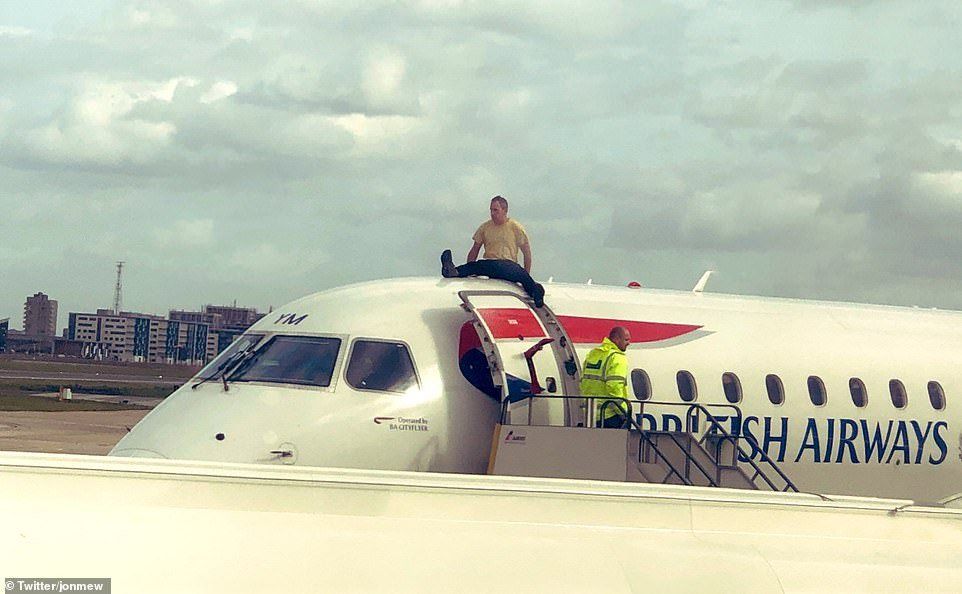The man who spectacularly glued himself to the top of a British Airways aircraft two years ago has been jailed for one year. The court at Southwark Crown Court deliberated for less than an hour before handing down his sentence, noting that his actions disrupted more than 300 passengers and cost British Airways in the region of £40,000.
Punished for disruption
Former Paralympian James Brown caused widespread disruption in October 2019 when he climbed onto the top of a British Airways aircraft. Brown, who is visually impaired, had a ticket for the flight to Amsterdam but surprised the crew by making his way onto the top of the Embraer aircraft as passengers were boarding.
The court heard that Brown wedged his phone in the door so that it wouldn’t close, and proceeded to use a bottle of superglue he had secreted in his luggage to glue his right hand to the aircraft. The former Team GB cyclist and athlete remained on the top of the aircraft for more than an hour before he was able to be removed.
Hearing his case, a trial at which he self-represented, Judge Gregory Perrins said,
"The right to protest does not entitle you to cause major widespread disruption to a major airport... simply because you think it is the right thing to do. This is a case in which you acted together with at least 10 other activists to plan and execute a major act of disruption.
"You intended to cause the maximum amount of disruption possible at the airport, if not shut it down completely."
Brown broke down in tears at Southwark Crown Court, claiming that it was necessary to ‘do something spectacular’ to draw attention to the climate crisis. He denied the charge of causing a public nuisance. The jury hearing his case back in July deliberated for less than an hour before finding him guilty.
Warning to Extinction Rebellion
Last Friday, Brown was again in court, this time to receive his sentence. On this occasion, Tim Maloney QC was defending Brown, who commented on the regret felt by the activist. He said,
“He has expressed an intention not to become involved in unlawful protest again. He regrets it and is determined not to be involved in such activity again.â€
But Judge Perrins was not ready to be lenient. As he handed down a sentence of one year, of which Mr Brown will serve about half, he issued a warning to other activists keen to get involved in disruptive protests. He said,
“You are not entitled to more lenient treatment simply because you were protesting about environmental matters as opposed to some other cause. Everyone in this country has the right to protest and there are many ways in which that can be done without breaking the law.â€
The day of Brown’s glue-related incident was just one of a number of disruptive actions experienced at London City Airport that day. At around the same time, an Aer Lingus aircraft was delayed for almost two hours as an activist refused to take his seat, preferring instead to pace the aisle giving a lecture on climate change.
Outside the airport and in the terminal, hundreds of protestors gathered with banners, singing and chanting. Others blocked passengers from getting into the terminal, while the roads outside the airport were also blocked.
It’s not the first time aviation has been targeted by climate protestors. Paris Orly was stormed by activists in mid-2020, while this March saw an Air France Boeing 777 vandalized with green paint.

